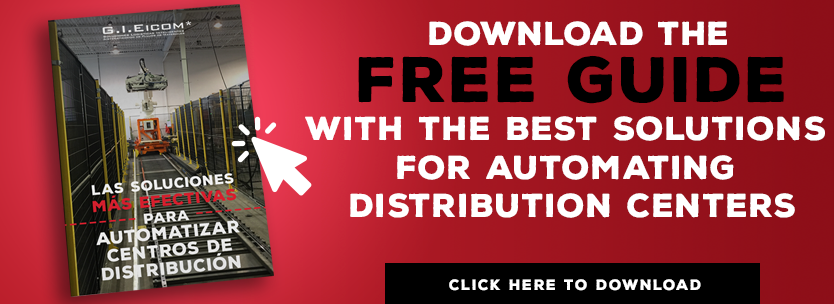
According to the Material Handling Institute, material handling includes the transfer, protection, storage and control of materials and products throughout the entire process of manufacture, distribution, use, and disposal.
The following is a compilation of 5 ways to optimize the processes involved in material handling:
1.- Implement an intelligent layout
Evaluate all possible layouts by assessing both their upsides and downsides.
The type of product and item flow per time unit will determine the handling of such products, same which is intrinsic to internal processes.
Consider even the most critical conditions of flows and products. This way you will ensure that the product satisfies all demands required. If the solution included an elevated product flow, then the same will require sorters that work in an integrated, controlled, and automated way.
Keep in mind that having a detailed description of the materials to be handling, their flow logics, rates, restrictions, and different sub-handling processes is a crucial point to minimize implementation risks.
2.- Optimize the human factor
When we talk about optimizing the human factor, we do not necessarily refer to increasing the demands or work loads, but rather to improve efficiency of work shifts, facilitating the level required in the operation.
In this context, it is important to acknowledge the human abilities and limitations to ensure safe and effective operations.
Material handling must include tools, equipment, and devices that contribute to improve productivity and quality of life of the worker, as well as increasing corporate quality with no detriment to human well-being.
3.- Standardize the components involved
It is advisable to make sure that the different components and modules that comprise the material handling set are as homogeneous as possible, ensuring reorganization with little investment.
Select well-known suppliers with excelent local supply since, with no local support of spare parts, the continuity of production will be affected, product output will be decreased, and productivity will diminish.
4.- Leverage times and space
Evaluate and assess the logistics behing material flow to find where you may eliminate unnecessary operations that provide little to none added value. Likewise, saving space also represents a priority when looking for a way to make effective and efficient use of the available space.
5.- Automate material handling
Material handling operations should be automated when necessary with the purpose of optimizing operations and responses to internal or external clients; as well as providing them with consistency and predictability, thus reducing operational costs.
There are different ways to automate material handling, according to the desired type, flow, or process. Almost as a rule, elevated flows are handled with sorter-type continuous equipment, while unit flows are handled with other types of technologies, such as VGA, forklifts, and cranes, among others.
With the 5 tips compiled above, you may increase efficiency in material flows, reduce time and costs, optimize the use of the plant facilities, improve safety conditions for operators, and increase productivity.
In GIEICOM, we are experts in the development of intelligent logistics solutions to automate material handling. If you are looking for advice for developing a project fully focused and adapted to your specific needs, click here.



